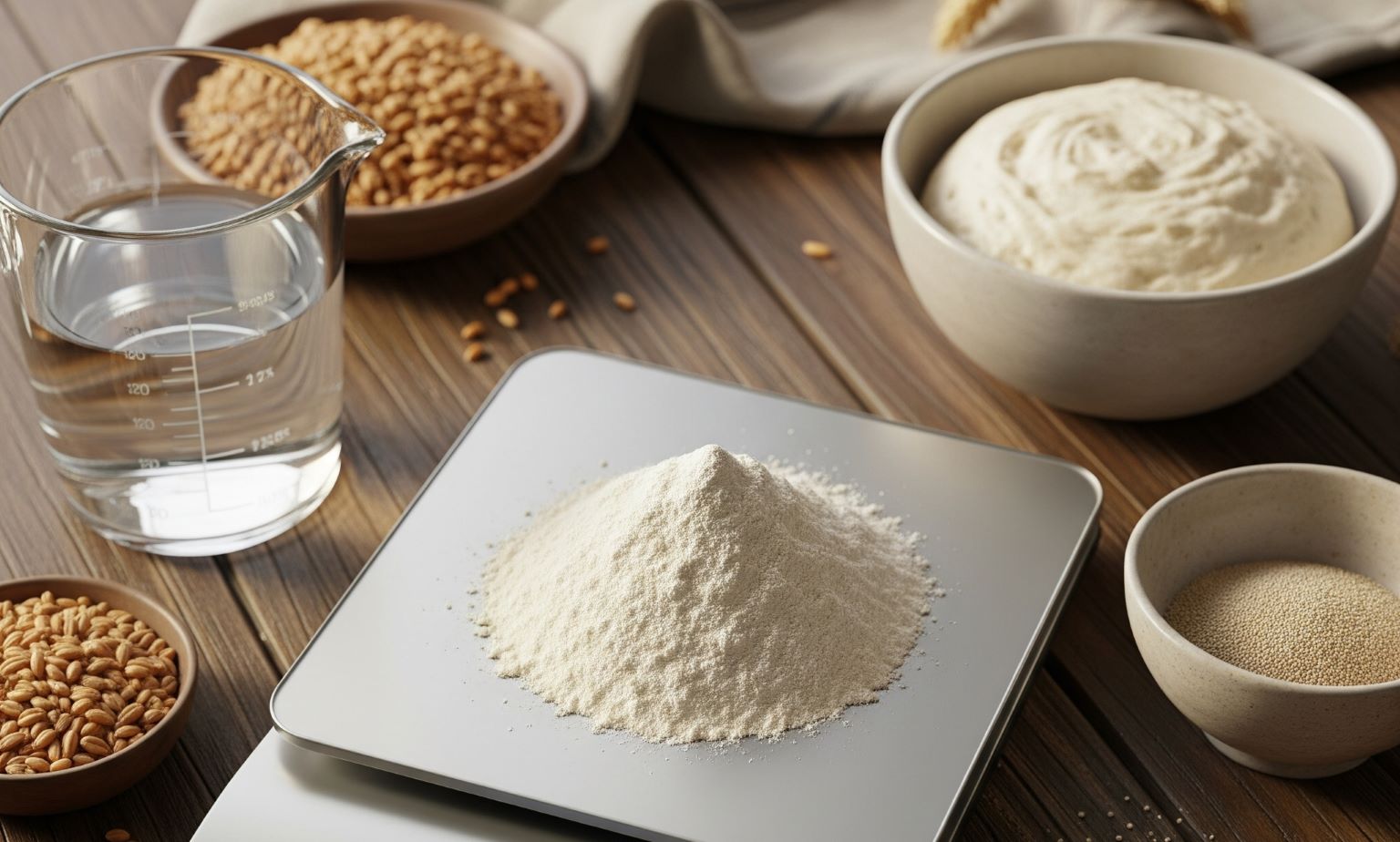Understanding Baker's Percentage
The simple math that unlocks infinite recipe variations.
At first glance, baker's percentage (or baker's math) can seem intimidating. But it's the professional standard for a reason: it's the most reliable and flexible way to express a bread formula. Once you understand it, you can look at any recipe and instantly understand its characteristics, scale it up or down, and even create your own variations with confidence.

What Is Baker's Percentage?
In baker's percentage, the total weight of the flour is always 100%. Every other ingredient is expressed as a percentage of that total flour weight.
Let's take a simple recipe:
- Flour: 1000g
- Water: 700g
- Salt: 20g
- Leaven: 200g
Here’s how you'd express that in baker's percentages:
- Flour: 1000g / 1000g = 100%
- Water (Hydration): 700g / 1000g = 70%
- Salt: 20g / 1000g = 2%
- Leaven: 200g / 1000g = 20%
Why Not Use Total Weight?
By keeping flour as the constant 100%, you can instantly compare formulas. A recipe with 80% hydration is always going to be wetter than one with 65% hydration, regardless of the final loaf size. It provides a stable frame of reference.
How to Use It: Scaling a Recipe
This is where baker's math shines. Let's say you want to make a loaf using 500g of flour instead of 1000g. You just apply the percentages to your new flour weight.
- Flour: 500g (our new 100%)
- Water: 500g * 0.70 = 350g
- Salt: 500g * 0.02 = 10g
- Leaven: 500g * 0.20 = 100g
Just like that, you've perfectly scaled the recipe down while maintaining the exact same ratios. No complex division or guesswork required.
CrumbScience Does the Math For You
While it's great to understand the concept, you don't have to do the calculations by hand. The CrumbScience tracker automatically shows you the baker's percentage for your ingredients as you input them, helping you learn and perfect your formulas.
Start a New Fermentation